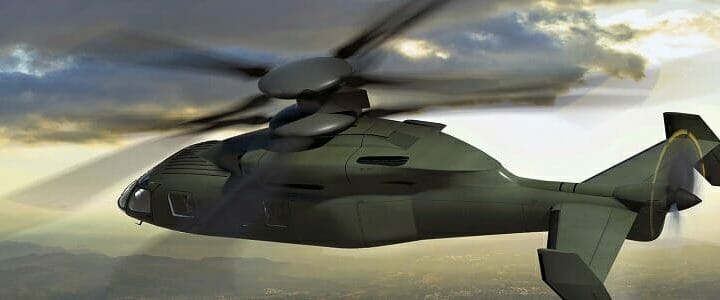The U.S. Army is pursuing several new aircraft types to improve the ability of its aviation fleet to fight and defeat potential adversaries, especially those that are increasingly fielding sophisticated air defenses and other high-tech systems.
“We are mindful that we’re in a very long competition with peer, near-peer nation-states,” said Brig. Gen. Wally Rugen, director of the Army’s Future Vertical Lift Cross-Functional Team, who spoke Oct. 10 at the Association of the U.S. Army’s (AUSA) annual conference in Washington, D.C. “We understand that competition more and more every day, and we understand that we need to be far more lethal than we are today.”
Next year, the Army plans to finish a study that will help it refine its path for the Future Long Range Assault Aircraft (FLRAA), a medium-lift aircraft that would be faster and more agile than the UH-60 Black Hawk troop-transport helicopter it would replace.
Anticipating the FLRAA competition, Textron’s Bell and a Sikorsky-Boeing team are developing prototypes. Bell’s V-280 Valor tilt-rotor aircraft began flight tests in December, and the Sikorsky-Boeing SB>1 Defiant helicopter is expected to start flying by year’s end.
The Army, meanwhile, recently released solicitations that could pave the way for both a new light-attack, scout helicopter and a new unmanned aircraft.
The scout helicopter, or Future Attack Reconnaissance Aircraft (FARA), would replace the Army’s retired OH-58 Kiowa Warrior.
“The Army currently lacks the ability to conduct armed reconnaissance, light attack and security with improved stand-off and lethal and non-lethal capabilities with a platform sized to hide in radar clutter and for the urban canyons of mega cities,” the Army wrote in the FARA solicitation. “To close this gap, the Army envisions an optionally manned, next-generation rotorcraft with attributes of reduced cognitive workload, increased operational tempo (OPTEMPO) through ultra-reliable designs and extended maintenance-free periods, and advanced teaming and autonomous capabilities. Teamed with unmanned systems and various air-launched effects, this platform will be the centerpiece of the integrated air defense system (IADS) breeching team to provide freedom of maneuver in a multi-domain battle.”
The new FARA aircraft also must have “a resilient digital backbone designed to allow rapid capability advancement in subsystems and software and affordable lifecycle management,” the solicitation says.
The Army plans to award several preliminary design contracts for FARA next year. Two companies will be selected to build prototypes that can be flight-tested in FY 2023. Bell and Sikorsky have both indicated that they intend to compete.
For the Future Tactical Unmanned Aircraft Systems (FTUAS), which might replace the Army’s aging Shadow reconnaissance and surveillance drone, the Army intends to award contracts to three companies this year to provide aircraft for a demonstration.
The Army wants soldiers to experiment with the UAS and give feedback, said Brig. Gen. Thomas Todd III, the Army’s program executive officer for aviation.
At the AUSA conference, Todd told industry representatives that “we’ve heard for a long time that you’re ready, so you’re going to get your chance. We’re ready to see what you’ve got.”




